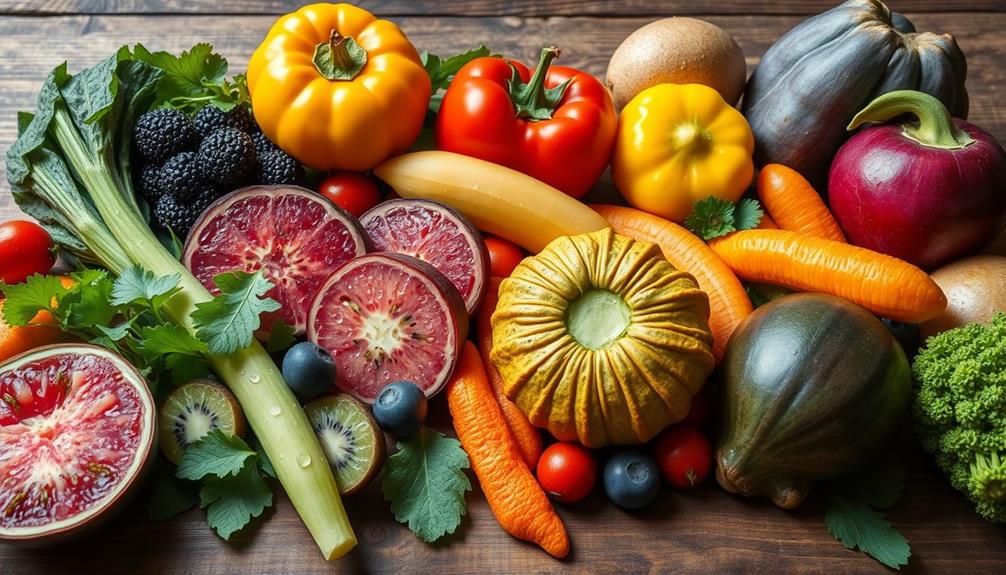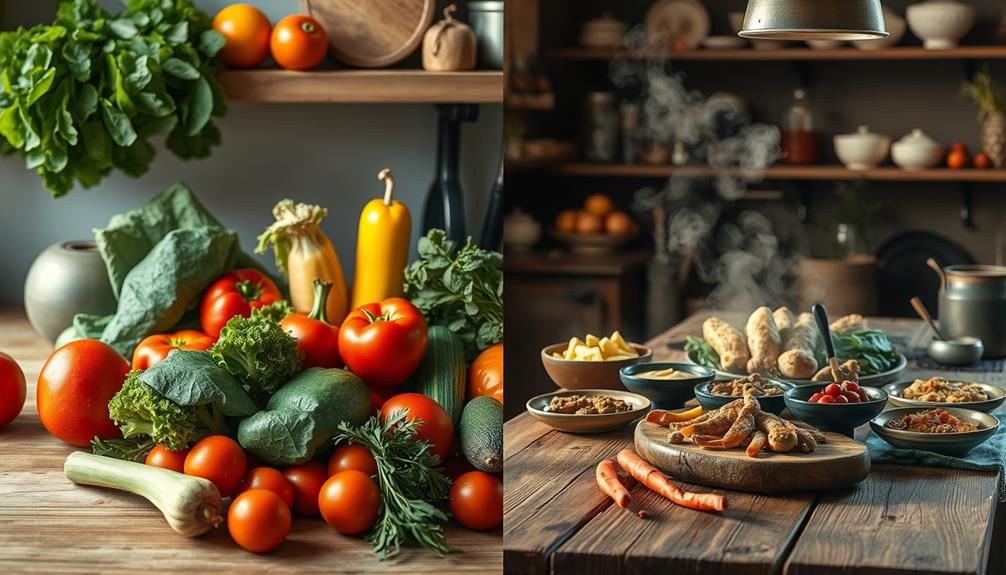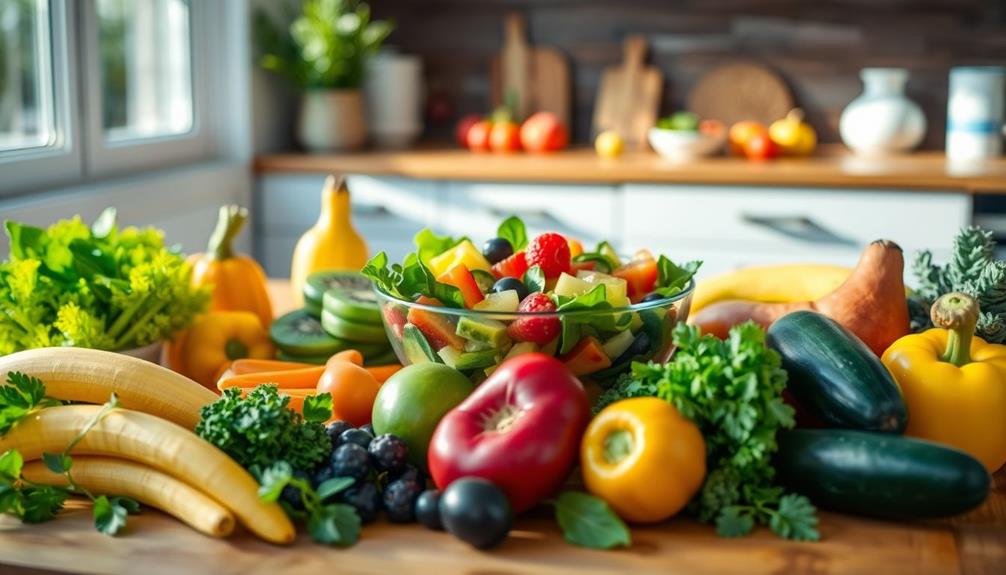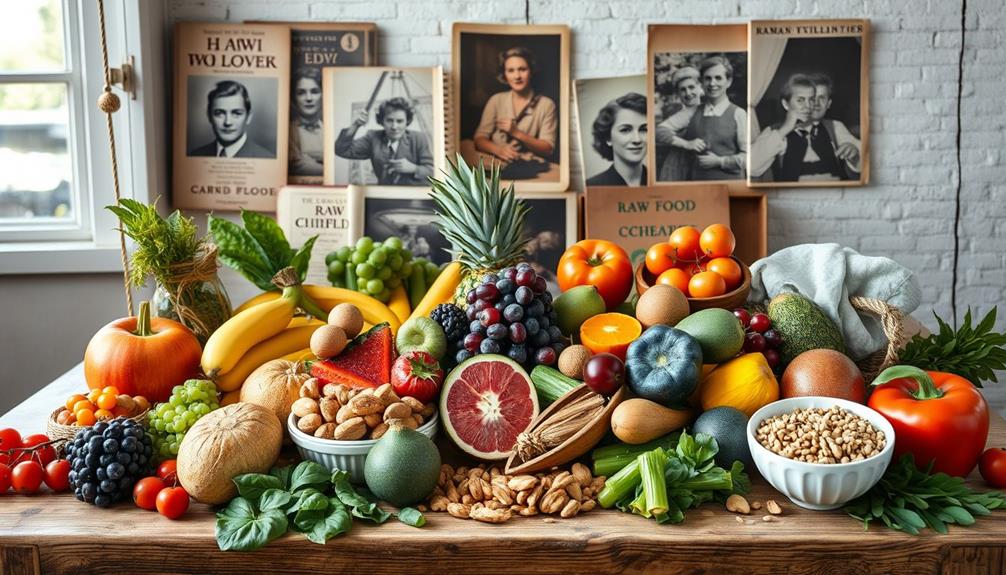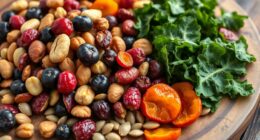Raw food can be easier to digest for many people due to its high fiber content and natural enzymes, which support gut health. However, individual digestive responses can vary, as some raw foods might cause discomfort initially. Cooking, on the other hand, enhances nutrient absorption and can break down tough fibers, making certain foods more digestible. While raw foods retain more vitamins, balancing them with cooked options can optimize nutrient intake and gut health. If you're curious about which foods are best eaten raw or cooked, there's more to uncover about your dietary choices.
Key Takeaways
- Raw foods are high in fiber, promoting gut health but may cause initial digestive discomfort due to increased fiber intake.
- Cooking enhances nutrient absorption by breaking down tough fibers, making certain foods easier to digest.
- Raw foods retain more vitamin C and B vitamins, while cooking can improve the bioavailability of other nutrients like lycopene.
- A balanced diet of both raw and cooked foods can optimize gut microbiota and enhance overall health.
- Raw diets may lead to nutrient deficiencies, such as vitamin B12 and protein, if not properly planned.
Understanding Digestive Differences
When you consider the differences in digestion between raw and cooked foods, it's essential to recognize how each affects your body. Raw foods often come packed with fiber, which can boost your gut health by increasing fiber intake. Additionally, certain essential oils, such as peppermint oil, can aid digestive health by alleviating symptoms like nausea and bloating, enhancing your overall digestive experience essential oils for digestive support.
However, that same insoluble fiber can lead to digestive discomfort for some people. On the other hand, cooking breaks down tough fibers, making these foods easier to chew and digest. This process enhances nutrient absorption and digestibility for many cooked vegetables and grains.
For instance, cooking sweet potatoes improves their nutrient availability, allowing your body to extract more energy than if you ate them raw. Individual differences in gut microbiomes also play a significant role in how your body responds to raw versus cooked foods, leading to varying digestive reactions among different individuals.
While raw foods retain higher levels of certain vitamins and enzymes, cooking can enhance the absorption of specific nutrients, like lycopene in tomatoes. Ultimately, the ease of digestion and nutrient availability can depend heavily on both the type of food and the cooking methods you choose.
Nutritional Benefits of Raw Foods
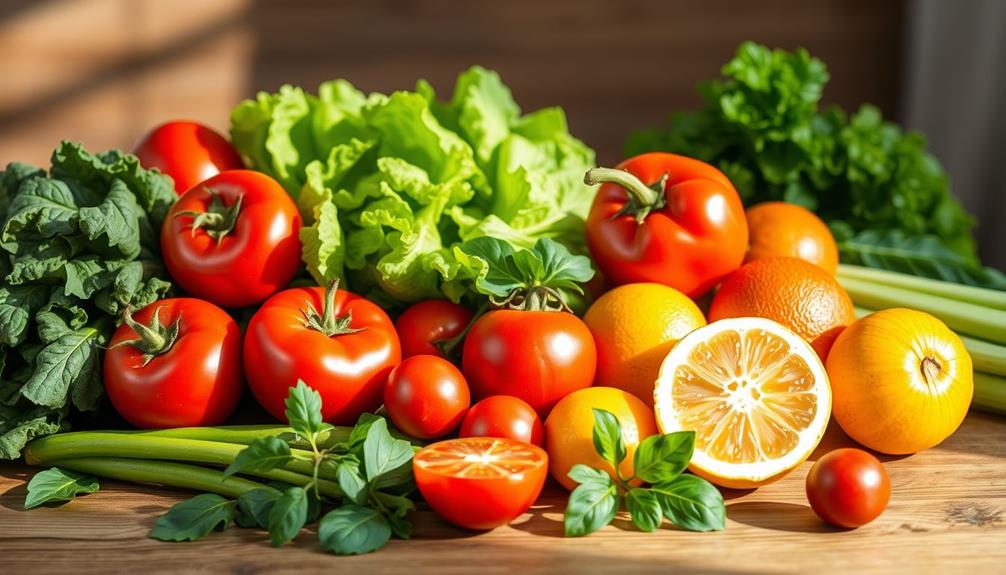
A diverse array of raw foods offers impressive nutritional benefits that can enhance your overall health. By incorporating raw foods into your diet, you can retain higher levels of essential nutrients, particularly vitamin C and various B vitamins, which often diminish through cooking.
These foods are also rich in enzymes, believed to support digestion and improve nutrient absorption, especially from fresh fruits and vegetables. Additionally, embracing a diet with raw foods aligns with recommendations for a balanced intake of fruits and vegetables, which is vital for overall wellness and digestive health natural remedies alongside conventional medications.
A diet abundant in raw foods promotes a significant intake of dietary fiber, which is essential for digestive health and regularity. Additionally, certain raw vegetables, like broccoli and cabbage, contain compounds such as sulforaphane and myrosinase, which may provide anti-cancer properties when consumed raw.
Moreover, raw garlic and onions retain sulfur compounds that boast anti-inflammatory and antioxidant properties, further benefiting your overall health.
By embracing raw foods, you're not just diversifying your meals; you're also maximizing your nutritional benefits, supporting better digestion, and potentially reducing health risks.
How Cooking Affects Digestion
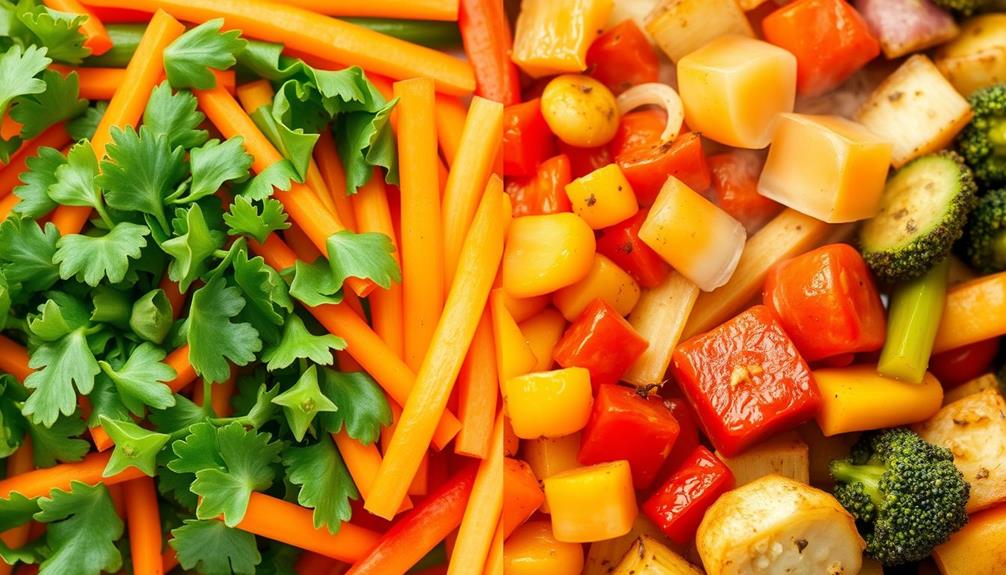
Cooking markedly impacts digestion by breaking down food fibers, making them easier to chew and digest. This process enhances nutrient absorption, allowing your body to utilize more of the nutrients in cooked foods.
For instance, certain cooking methods like steaming and stir-frying can preserve more nutrients compared to boiling, which often leads to considerable vitamin loss. Additionally, cooking offers a chance to explore various flavors and aromas, much like how different brewing methods affect caffeine content greatly.
Furthermore, cooking increases the bioavailability of some antioxidants, such as lycopene found in tomatoes. When cooked, these compounds become better absorbed by your body.
Cooking also plays an essential role in deactivating anti-nutrients present in raw grains and legumes, thereby improving their digestibility. This means you're likely to experience less digestive discomfort when consuming these foods in their cooked form.
While raw foods can offer high fiber content, the tougher texture may pose challenges for some individuals, leading to potential digestive discomfort. In contrast, cooked foods often present a more manageable option for digestion, allowing you to enjoy a wider variety of nutrients without the strain. Additionally, cooking can help break down the cellular structure of certain foods, making it easier for the body to absorb essential nutrients. On the other hand, raw food digestion may require more energy and time for the body to process, potentially leading to bloating and gas for some individuals. It’s important to listen to your body and find the right balance of raw and cooked foods that work best for your digestive system.
Ultimately, understanding how cooking affects digestion can help you make informed choices about incorporating both raw and cooked foods into your diet.
Safety Concerns With Raw Food
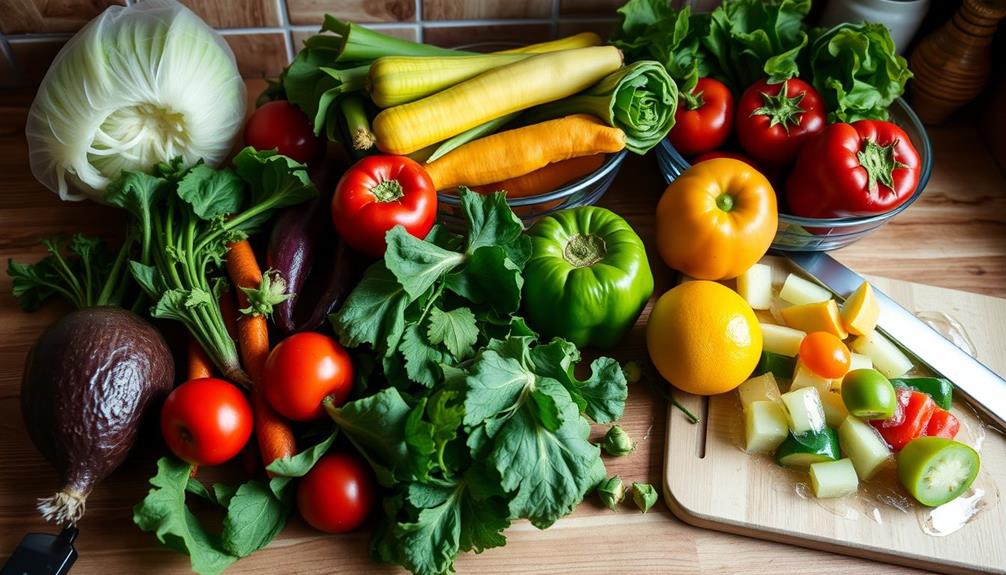
When considering a raw food diet, you need to be aware of the potential pathogen risks that come with consuming raw animal products and certain vegetables.
Individuals with certain mental health conditions, such as chronic feelings of emptiness, may be particularly vulnerable to dietary changes that can exacerbate their symptoms.
Safe preparation methods are essential to reducing these risks, as improper handling can lead to serious health issues.
Additionally, it's important to recognize the nutritional risks associated with certain raw foods that contain toxins, which can only be eliminated through cooking.
Pathogen Risks Uncovered
Raw food diets can sound appealing for their health benefits, but they come with serious safety concerns. Consuming raw foods, especially animal products like meat, fish, and eggs, greatly increases your risk of foodborne illnesses caused by harmful pathogens such as E. coli and Salmonella. These pathogens are typically killed during cooking, making raw consumption risky.
Additionally, mammography aims to detect breast cancer early for better treatment outcomes, highlighting the significance of preventive measures in health.
Contaminated vegetables, like spinach and lettuce, can also harbor dangerous bacteria. Proper washing and handling are essential, yet many still fall victim to foodborne outbreaks.
Additionally, certain raw foods, such as kidney beans and cassava, contain natural toxins that require cooking to neutralize, emphasizing the significance of safe food preparation.
Even sprouts, often considered a health food, can be breeding grounds for harmful bacteria, leading to severe food poisoning cases. The CDC warns against consuming unpasteurized dairy products due to their potential to carry dangerous pathogens.
While raw diets promise digestive enzymes and health benefits, the reality is that the risks of harmful bacteria and foodborne illnesses can outweigh those benefits. Always consider these pathogen risks before diving into a raw food lifestyle.
Safe Preparation Methods
Guaranteeing the safety of your food is crucial, especially when it comes to raw ingredients. Raw foods can harbor harmful pathogens like Salmonella and E. coli, so you need to adopt safe preparation methods to minimize risks. Here are some essential tips:
- Wash raw fruits and vegetables: Thoroughly rinse all produce under running water to remove dirt and any harmful bacteria. Regular cleaning of your produce can help prevent illness, much like how routine health checks for pets are recommended.
- Avoid cross-contamination: Use separate cutting boards and utensils for raw animal products and produce to prevent contamination risks.
- Consider proper cooking: Some raw foods, like kidney beans and cassava, contain natural toxins that require cooking to neutralize. Always guarantee these foods are cooked properly before consumption.
- Be cautious with sprouting: While sprouting seeds and legumes can enhance nutrition, it can also introduce bacteria if not done under sanitary conditions.
Additionally, consider pasteurization for products like milk, which eliminates harmful pathogens without cooking.
Nutritional Risks Explored
While many people are drawn to the benefits of a raw food diet, it's vital to recognize the nutritional risks that come with it. One significant concern is the potential for nutrient deficiencies, particularly in vitamin B12 and protein. If you're not careful to include diverse food sources, you might find yourself lacking important nutrients vital for maintaining overall health.
Additionally, understanding the financial implications of food choices, including the costs associated with maintaining a balanced diet, may help emphasize the need for proper meal planning and preparation financial considerations for elderly care.
Raw animal products, like meat and eggs, pose serious health risks, as they can harbor pathogens such as Salmonella and E. coli, leading to foodborne illnesses. Additionally, certain raw foods contain natural toxins; for instance, raw kidney beans can be harmful due to lectins, which cooking can neutralize.
Sprouts, often seen as healthy additions, also come with risks, as they've been linked to outbreaks of foodborne illnesses. Long-term adherence to a raw food diet may negatively affect your bone mass and elevate homocysteine levels, increasing cardiovascular disease risk.
Impact on Gut Microbiome
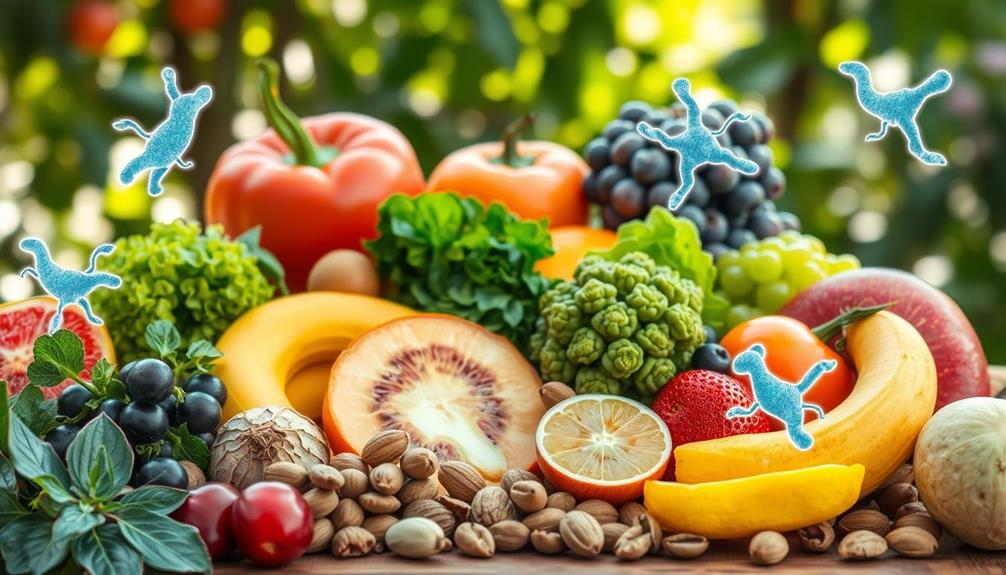
When you shift to a raw food diet, you might notice changes in your gut bacterial diversity.
While raw foods can boost fiber intake, making them beneficial for certain gut bacteria, they mightn't always be easy to digest. For instance, certain raw vegetables can be harder on the digestive system due to their high fiber content, which can lead to gastrointestinal discomfort for some individuals.
Cooking can enhance nutrient absorption and improve gut health, showing that both raw and cooked foods have unique impacts on your microbiome.
Furthermore, nutritional benefits of foods like beetroot can vary considerably based on preparation methods.
Gut Bacterial Diversity
Gut bacterial diversity plays an integral role in your overall health, as it impacts how effectively your body processes and absorbs nutrients. A diet rich in raw foods can enhance this diversity, contributing positively to your gut health.
Additionally, incorporating a balanced diet, including raw foods, is essential for optimizing health and longevity, as emphasized in lifestyle for longevity. However, it's vital to recognize that the balance between raw and cooked foods markedly influences your gut microbiota.
Here are four key points to reflect on:
- Fiber Intake: Raw foods are often high in fiber, which supports the growth of beneficial bacteria in your microbiome.
- Bacterial Variety: Research shows that individuals on raw diets may promote certain beneficial bacteria, enhancing bacterial diversity.
- Digestibility Differences: Your gut microbiome affects how well you digest raw foods, meaning digestibility can vary from person to person.
- Cooked Foods' Benefits: Studies indicate that cooking can improve bacterial diversity in some cases, as seen with sweet potatoes.
Ultimately, increased bacterial diversity is linked to better gut health and overall health. Balancing raw and cooked foods may be key to optimizing your nutrient absorption and maintaining a thriving gut microbiome.
Digestion of Raw Foods
Many people find that the digestion of raw foods considerably impacts their gut microbiome. Raw foods are generally higher in fiber, which can enhance digestion and promote gut health by supporting beneficial bacteria.
Additionally, the introduction of a diverse range of raw fruits and vegetables can mirror the importance of key domains of development in psychology, as environmental interactions shape individual health outcomes. However, some folks might experience digestive discomfort initially due to this increased fiber intake.
Research shows that while raw foods can boost nutrient absorption and provide essential enzymes, they may also lead to poorer bacterial diversity in the gut. For instance, studies on mice indicate that those fed raw sweet potatoes had less bacterial diversity compared to those with cooked versions. This suggests that cooking methods can influence how well your gut microbiome thrives.
Your individual responses to raw versus cooked foods can vary widely. While many may thrive on a raw diet, others might find that cooked foods are easier to digest, reducing issues like gas and bloating.
Understanding how raw foods affect your gut microbiome is vital for optimizing your gut health. Balancing raw and cooked foods might just be the key to improving both your digestion and overall well-being.
Nutrient Retention in Cooking
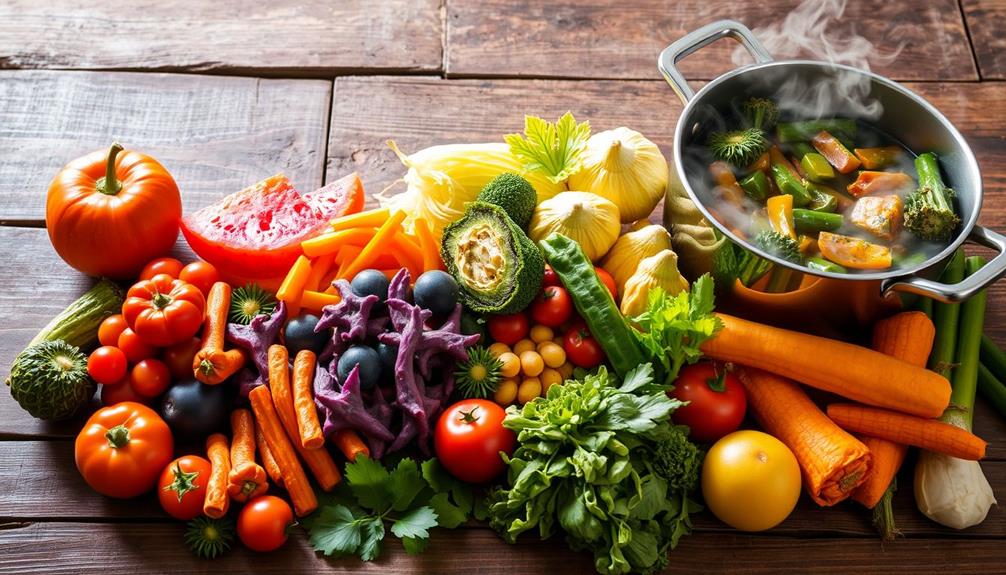
Nutrient Retention in Cooking
Cooking affects the nutrient content of food in various ways, often leading to both losses and enhancements. You might be surprised to learn that while some nutrients diminish, others become more accessible. Here are some key points about nutrient retention during cooking:
1. Water-soluble vitamins: Cooking methods like boiling can lead to significant nutrient loss, particularly in vitamins like C and B, which may decrease by 50-60%.
Additionally, explore how different brewing methods can also affect nutrient retention in beverages, such as coffee, where certain preparation techniques can enhance the bioavailability of beneficial compounds various brewing methods.
2. Bioavailability: On the flip side, cooking can enhance the bioavailability of certain nutrients. For example, cooking tomatoes boosts the extractable lycopene, an antioxidant that may lower cancer risk.
3. Cooking methods: How you cook matters. Steaming and stir-frying tend to preserve more nutrients compared to boiling or frying.
4. Nutrient absorption: Some cooked vegetables, like spinach and carrots, actually improve nutrient absorption, demonstrating that cooking can be beneficial for specific foods.
Interestingly, fat-soluble vitamins (D, E, and K) remain largely unaffected by cooking, meaning some of your food's nutrient content is preserved despite heat exposure.
Understanding these factors can help you make informed choices about your cooking methods.
Foods Best Eaten Raw

When it comes to maximizing the nutritional benefits of your food, certain items shine brightest when enjoyed raw.
Raw foods like broccoli retain higher levels of sulforaphane, an anti-cancer compound that diminishes when cooked. Onions and garlic, when consumed raw, offer significant health benefits, including anti-platelet properties and vital sulfur compounds linked to cancer prevention.
Leafy greens, such as spinach, provide valuable fiber content that aids in digestion, even though cooking them enhances nutrient absorption.
Fruits, particularly berries and apples, are best eaten raw to benefit from higher levels of vitamin C and antioxidants, which contribute to your overall health.
Don't overlook raw nuts and seeds either; they deliver essential fatty acids and enzymes that support digestion. Soaking these can further enhance nutrient absorption, making them even more beneficial.
By incorporating these foods into your diet raw, you're not just enjoying their flavors but also reaping the health benefits associated with their full nutrient profiles.
Embrace these raw foods to boost your nutrient intake and support your health effectively!
Foods Best Eaten Cooked
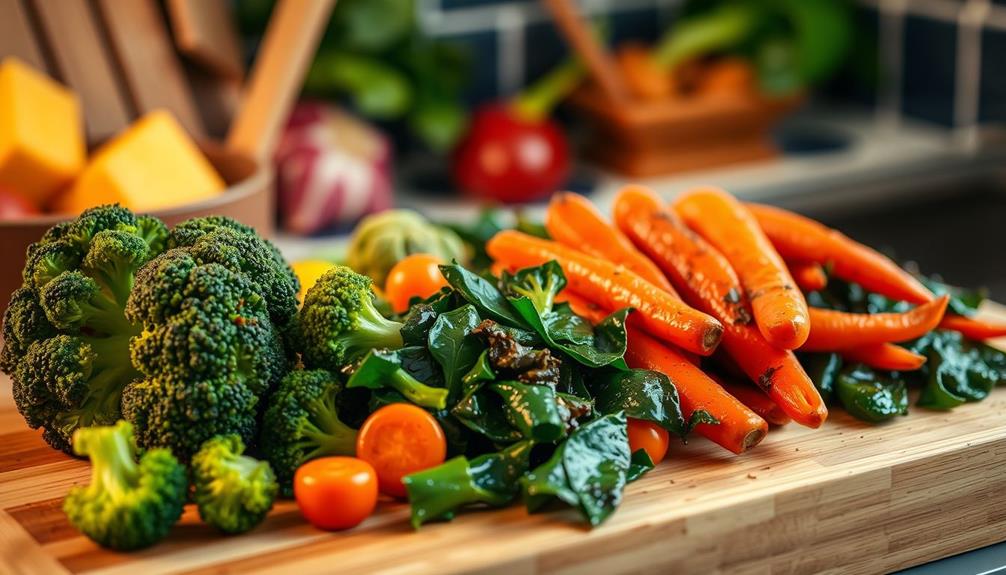
Certain foods are best enjoyed cooked, as the heat can greatly enhance their nutritional benefits. Cooking not only improves digestion but also increases nutrient absorption by breaking down cell walls and reducing anti-nutrient content.
Here are four key foods that shine when cooked:
- Legumes and Grains: Cooking these foods reduces anti-nutrient content, making nutrients more bioavailable, which is crucial for maximizing health benefits.
- Spinach and Tomatoes: Heat enhances the absorption of essential vitamins like beta-carotene, turning these vegetables into powerhouse sources of nutrients.
- Mushrooms: Cooking mushrooms releases bioactive compounds and boosts their antioxidants, making them a nutritious addition to your meals.
- Asparagus and Broccoli: Cooking not only increases antioxidant levels like ferulic acid in asparagus but also enhances sulforaphane availability in broccoli, linked to cancer prevention.
Incorporating these cooked foods into your diet allows you to reap maximum benefits while improving overall digestion.
Balancing Raw and Cooked Diets

In today's health-conscious world, balancing raw and cooked diets can greatly enhance your nutritional intake. By incorporating both raw and cooked foods, you can maximize nutrient absorption and improve your overall health.
Cooking methods like steaming and stir-frying can increase the bioavailability of certain nutrients while reducing anti-nutrient content in grains and legumes, making them easier to digest.
Some vegetables, such as spinach and tomatoes, release more nutrients when cooked, while others, like broccoli and cabbage, are best enjoyed raw. This variety guarantees a balanced intake of diverse nutrients, which is essential for preventing nutrient deficiencies.
For instance, vitamin B12 and protein are often less available in raw food diets.
Moreover, a mix of raw and cooked foods supports gut health by providing fibers that nurture different gut microbiota, enhancing your digestive health.
By carefully selecting cooking methods and understanding which foods are best raw or cooked, you can create a well-rounded diet that promotes peak health.
Embrace this balance to reap the benefits of both raw and cooked foods for your body's needs.
Frequently Asked Questions
Is Raw Food Hard on the Stomach?
Raw food can be hard on your stomach, especially if you're not used to high fiber. Some raw foods contain anti-nutrients that might cause discomfort, so it's crucial to listen to your body's reactions.
What Helps Digest Raw Food?
To help digest raw food, soak beans and grains, sprout seeds, chew thoroughly, eat smaller meals, and incorporate fermented foods. These steps enhance enzyme activity, break down fibers, and support overall gut health.
Is Raw Meat More Difficult to Digest?
You might think raw meat's a gourmet delight, but it's actually tougher on your digestion. Cooking breaks down those tough proteins, making it easier for your body to absorb nutrients and avoid discomfort.
Is a Raw Diet Good for Gut Health?
A raw diet can benefit your gut health, promoting fiber intake and beneficial bacteria. However, balancing raw and cooked foods is essential for ideal nutrient absorption, as some raw items might be harder for you to digest.
Conclusion
So, while you might think raw food is the ultimate digestive aid, the truth is a bit more complicated. Sure, you get those crisp nutrients, but cooking brings out flavors and makes some foods easier on your stomach. It's almost ironic, isn't it? You go raw for health, but sometimes, the best choice is a warm, comforting meal. Embracing both raw and cooked foods could be the real secret to a happy gut and a satisfied palate.

